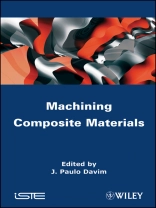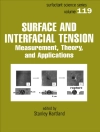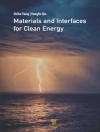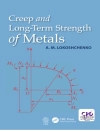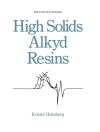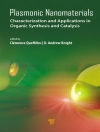In recent years, the application of composite materials has
increased in various areas of science and technology due to their
special properties, namely for use in the aircraft, automotive,
defence, aerospace and other advanced industries. Machining
composite materials is quite a complex task owing to its
heterogenity, and to the fact that reinforcements are extremely
abrasive. In modern engineering, high demands are placed on
components made of composites in relation to their dimensional
precision as well as their surface quality. Due to these potential
applications, there is a great need to understand the questions
associated with machining composite materials.
This book aims to provide the fundamentals and the recent
advances in the machining of composite materials (polymers, metals
and ceramics) for modern manufacturing engineering. The three parts
of the book cover the machining of polymeric, metal and ceramic
matrix composites.
This book can be used as a text book for the final year of an
undergraduate engineering course or for those studying
machining/composites at the postgraduate level. It can also serve
as a useful work of reference for academics, manufacturing and
materials researchers, manufacturing and mechanical engineers, and
professionals in composite technology and related industries.
Зміст
Preface xi
Chapter 1. Mechanics and Modeling of Machining Polymer Matrix
Composites Reinforced by Long Fibers 1
Liangchi ZHANG
1.1. Introduction 1
1.2. Orthogonal cutting 2
1.3. Cutting force modeling 13
1.4. Drilling 21
1.5. Abrasive machining 35
1.6. Concluding notes 35
1.7. References 36
Chapter 2. Machinability Aspects of Polymer Matrix Composites
39
Franck GIROT, Luis Norberto LÓPEZ DE LACALLE, Aitzol
LAMIKIZ, Daniel ILIESCU and Mª Esther GUTIÉRREZ
2.1. The machining of polymer composites 40
2.2. Tools 41
2.3. Cutting mechanisms in composite materials 54
2.4. Composite material damage due to machining 65
2.5. Milling of composite materials 70
2.6. Turning of composite materials 101
2.7. Conclusions 106
2.8. Acknowledgments 107
2.9. References 107
Chapter 3. Drilling Technology 113
Alexandre M. ABRÃO, Juan C. CAMPOS RUBIO, Paulo E. FARIA
and J. Paulo DAVIM
3.1. Introduction 113
3.2. Standard and special tools 117
3.3. Cutting parameters 123
3.4. Tool wear 125
3.5. Drilling forces 131
3.6. Surface integrity 140
3.7. Dimensional and geometric deviations 153
3.8. Conclusions 157
3.9. Acknowledgements 159
3.10. References 159
Chapter 4. Abrasive Water Jet Machining of Composites
167
François CÉNAC, Francis COLLOMBET, Michel
DÉLÉRIS and Rédouane ZITOUNE.
4.1. Introduction 167
4.2. Brief history of AWJT 168
4.3. AWJ machining process 168
4.4. AWJ cutting process 171
4.5. Quality of the kerf 172
4.6. AWJ cutting of composite materials 173
4.7. Applications 176
4.8. Perspectives 178
4.9. AWJ milling of composite materials 178
4.10. References 180
Chapter 5. Machining Metal Matrix Composites 181
Alokesh PRAMANIK and Liangchi ZHANG
5.1. Introduction 181
5.2. Conventional machining 182
5.3. Non-conventional machining 190
5.4. Tool-workpiece interaction 195
5.5. Summary 203
5.6. References 203
Chapter 6. Machining Ceramic Matrix Composites 213
Mark J. JACKSON and Tamara NOVAKOV
6.1. Introduction 213
6.2. Electro-discharge machining of CMCs 213
6.3. Water jet machining of CMCs 226
6.4. Laser machining of CMCs 227
6.5. Ultrasonic machining of CMCs 234
6.6. Application of CMCs: cutting tool inserts 245
6.7. Review of various technologies for machining CMCs 251
6.8. References 253
List of Authors 257
Index 261
Про автора
J. Paulo Davim is Aggregate Professor in the Department of Mechanical Engineering of the University of Aveiro, Portugal and is Head of MACTRIB (Machining and Tribology Research Group). His main research interests include machining/manufacturing processes and tribology/surface engineering.
